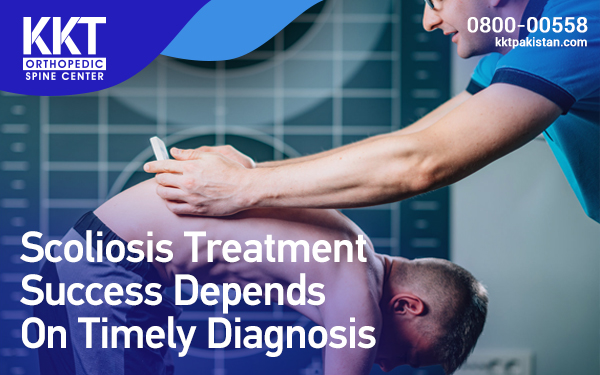Scoliosis refers to the condition which affects the spine in such a way that it depicts a sideways curvature. Scoliosis may occur as a result of a disease but its etiology is mostly idiopathic. It can either be infantile, juvenile or adolescent. Congenital scoliosis is always accompanied with other related disorders. Degenerative scoliosis is when aging process causing the wear and tear leads to the development of sideways curvature in the spine. Scoliosis treatment success depends on timely diagnosis. Diagnosis of scoliosis can be done utilizing several methods.
- Physical examination
- Spinal radiograph
- CT Scan
- MRI
Physical Examination
Adam’s Forward Bend Test is the standard test used by pediatricians for infants and school going children. The feet are put together and the patient is asked to bend 90 degrees at his or her waist. The doctor then observes and analyses any abnormalities in the curvature of the spine.
A level and a ruler can be used to measure the rib hump height. Other methods used to measure it are ultrasound and back contour devices etc.
Spinal Radiograph
After the physical examination, the scoliosis is confirmed with the help of a spinal radiograph. The intensity of the disease and severity of changes in the curvature of the spine is determined by Cobb Method. A posterior-anterior curvature of more than 10 degrees confirms scoliosis, scoliosis is considered significant if the curvature is between 25 and 30 degrees. A curvature of more than 45 degrees is considered severe and needs to be treated aggressively. Vertebral rotation or rotation of trunk is called structural scoliosis.
CT Scan
A computed tomography scan shows the anatomy of the spinal cord and its surrounding structures. It is very effective in visualizing the effects of scoliosis on entire bony structure of spinal cord.
MRI
Magnetic resonance imaging can also show in detail the effects of scoliosis on the spinal cord and its surrounding structures and also the extent of damage.
Early diagnosis
Early diagnosis is imperative for non-surgical treatment. Early diagnosis is dependent upon regular screening.
Late diagnosis
Most adult diagnosis occurs when the curvature has exceeded 25 to 30 degrees, by this time the patient might have developed spinal stenosis or narrowing of the spinal canal as well.
Early signs and symptoms that can lead to early screening and timely diagnosis
- One shoulder blade is more prominent than the other one
- One shoulder is higher than the other one
- One hip is higher than the other one
If incase these symptoms come into your observation, we invite you to come to KKT Orthopedic and Spine Center and get yourself tested and treated by our qualified and competent physicians.
You can call us by dialing
0800-00-558 or visit https://kktpakistan.com/make-an-appointment/ click on this link.
Reference:
Janicki JA, Alman B. Scoliosis: Review of diagnosis and treatment. Paediatr Child Health. 2007 Nov; 12(9): 771-776. Doi:10.1093/pch/12.9.771
